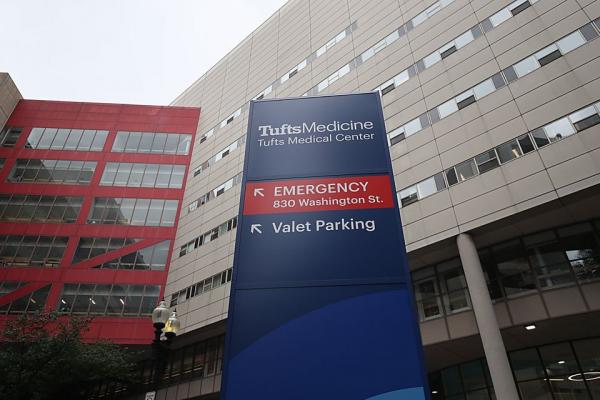Tufts Medicine has limited time to improve its financial picture - The Boston Globe

DATE: July 19, 2023

Tufts Medical Center.
In a state dominated by health care giants, Tufts Medicine has struggled to compete. Amid operating losses, it announced the elimination of more than 200 positions earlier this year.
Now, the system is asking the state for funding as it confronts some of its most serious financial challenges yet — an urgent need to improve its operations to avoid defaulting on an $800.8 million dollar agreement with bond holders. If the system fails to meet required metrics by the end of September, experts say bondholders could bring in a third party to restructure the health system.
“That could include closing services, laying off employees, selling off assets ... finding a partner to acquire you — things that aren’t geared to maintaining your primary business, things that are geared to just getting the cash out,” said Nancy Kane, professor emerita of Health Policy and Management at the Harvard T.H. Chan School of Public Health. “That’s not a good thing.”
Tufts Medicine is not the only health system in the state to confront operational losses as it grapples with continued fallout from the pandemic, but it serves a critical place in the state’s health care infrastructure, providing lower cost care than some of its larger peers and catering to a large low-income population. The 1,099-bed system employs 15,000 people and cares for 44,000 hospitalized patients annually. Beyond its flagship Tufts Medical Center, the organization also includes Lowell General Hospital and MelroseWakefield Healthcare.
The organization is the sixth largest health system in the state by inpatient and outpatient volume, according to fiscal 2020 metrics, and has expertise in areas ranging from cardiology to neurosurgery. But the system has struggled to secure reimbursement rates from commercial insurers that are as high as some of its larger peers. At the same time, 67 percent of its patents are on lower paying government insurance such as Medicaid. Though other health systems that care for high numbers of Medicaid patients qualify for additional government funding, Tufts’s Medicaid numbers aren’t high enough to meet such thresholds.
“In general, it’s been a very challenging time for hospitals, in particular those with high public payer shares that don’t have a lot of clout with [insurers],” said Michael Chernew, professor of health care policy at Harvard Medical School. “To the extent they are a low price provider, it would be a shame to lose them.”
There is also tremendous opportunity for the organization, said Andrew Dreyfus, former CEO of Blue Cross Blue Shield of Massachusetts and an expert in the local health care market.
“As health care costs grow over the next three to five years, I think there is an opening for an academic system in eastern Massachusetts to present itself as the high value, affordable alternative to more expensive systems,” Dreyfus said. “That’s one of the challenges before them.”
While the pandemic has hurt many health systems, Tufts has felt that pinch even more than some others. Burned out and beleaguered staff abandoned many jobs, creating staffing shortages. The amount Tufts paid for contract labor increased a staggering 1,423 percent, to $155.4 million in the 12 months that ended September 2022, compared to 2019. That increase was far higher than the 610 percent statewide spending increase on contract labor from 2019 to 2022, largely because Tufts entered the market for temporary staff after many of its peers and had to pay higher rates for nurses who were then in higher demand.
Even after reducing its reliance on contract labor, the cost to retain and recruit staff has gone up, and temporary labor costs remain above where they were through much of 2021.
But Tufts’ challenges go beyond the pandemic and include the expensive installation of the electronic medical records system Epic. In the 12 months ending September 2022, the system spent $70 million in one-time costs related to implementing the new technology. A spokesperson did not have an estimate for the Epic costs the hospital system incurred this fiscal year.
Like many of its peers, Tufts has struggled to see more patients to make up for the added costs. Problems discharging patients, due to staffing problems at nursing homes and rehabilitation hospitals, lead to capacity challenges that have hamstrung the system.
Executives have been working feverishly to turn around operations before the September deadline. In January, executives announced they would lay off 70 people and eliminate another 170 vacant positions. The system has also put a partial hiring freeze on new administrative roles, and is looking to consolidate other administrative work.
An outside consultant, hired by Tufts as part of bond requirements, has also helped the system strengthen operations, including taking advantage of its new electronic medical record system to improve its billing.
The system has also worked to find new ways to increase revenue, opening 12 new medical/surgical beds at Tufts Medical Center and two new outpatient surgery centers in Medford and Chelmsford in partnership with the system’s physicians.
Such plans come as the system shuttered its pediatric hospital earlier last year, which executives said was to care for more adult patients.
Plans are also under way to develop some potential partnerships, sell assets, or outsource what CEO Michael Dandorph said were “non core” aspects of Tufts operations, such as IT. That could help reduce the system’s expenses and bring in more revenue.
“We’re turning over every rock in terms of where are those opportunities,” Dandorph said.
The health system isn’t stopping at internal work. According to a conflict of interest disclosure form filed by Secretary of Health and Human Services Kate Walsh, Tufts Medicine asked the state agency to “consider financial remedies to help the health system navigate a substantial projected operating loss.” Walsh’s husband works as chief medical officer for Tufts Medical Center, and she recused herself from such considerations.
In an interview, Dandorph said the health system didn’t ask for a specific funding amount, but said it has met continually with members of the administration to keep them up to date about Tufts’ financial picture.
“If there’s … funding that’s going to be put on the table in terms of continued support for hospitals that are struggling, we’re one of those health systems that are struggling financially,” Dandorph said, noting that other systems had also made similar requests.
State financial relief could be coming. The House voted Thursday for $180 million in a supplemental budget for hospitals. The Senate has not yet taken up the measure.
Dandorph said the system has also asked for state help receiving Federal Emergency Management Agency funding. To date, the federal disaster agency has approved $68.7 million for Tufts. But the money has to pass through the state, and $16.4 million still has to be released from the state.
The health system has submitted for another $84.2 million in FEMA relief that is working its way through the approval process, and anticipates applying for another $18.7 million.
Through the first six months of its fiscal year, which ended in March, the health system reported a $103.9 million operating loss, slightly ahead of the $123 million operating loss it reported in the same period the year prior.
The shortfalls have forced the health system to spend money out of its reserves to fund operations and/or pay off debt, and its cash and unrestricted investments dropped 27.4 percent in the last six months to $424.8 million. Tufts has until September to ensure the system generates enough cash flow to be able to pay off its current debt, a requirement of the bond.
The financial pressures were echoed in bond rating documents from February, in which credit analyst Fitch Ratings downgraded Tufts to BBB with a negative outlook, saying the system faces the challenge of implementing a turnaround plan to stabilize its operations and rebuild its reserves.
But Dandorph was confident about the progress the system has made and the plan for the future, even as the work continued.
“We’ve seen steady decreases in our losses,” Dandorph said. “Are we where we want to be? No, but we’re moving in the right direction and the trajectories are moving in the right direction.”
Article by Jessica Bartlett, Reporter, The Boston Globe
Globe reporter Matt Stout contributed to this reporting.
